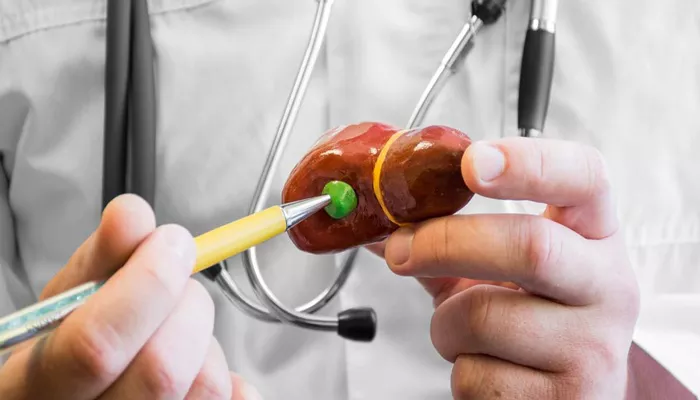Gallbladder pain strikes suddenly and intensely, often after eating a fatty meal. This sharp discomfort under your right rib cage signals your digestive system is struggling. Knowing how to respond can ease your suffering and prevent dangerous complications.
Immediate Steps to Ease the Pain
Stop eating immediately. Any food, especially fatty items, will make your gallbladder contract and worsen the pain. Stick to small sips of water until the attack passes.
Apply a warm compress. Place a heating pad or warm water bottle on your upper right abdomen for 15-20 minutes. The heat helps relax spasming muscles and improves blood flow.
Try different positions. Some find relief leaning forward or curling on their left side. Avoid lying flat on your back which increases pressure on the gallbladder.
Take over-the-counter pain relievers. Acetaminophen often works better than ibuprofen for gallbladder pain. Avoid aspirin as it can irritate your stomach further.
When to Seek Emergency Care
Pain lasting more than 5 hours needs evaluation. Prolonged attacks suggest possible complications like gallstones blocking ducts.
Fever over 101°F signals infection. Cholecystitis (inflamed gallbladder) requires antibiotics and possibly emergency surgery.
Yellow skin or eyes develop. Jaundice indicates a gallstone has migrated and blocked your bile duct.
Vomiting prevents keeping liquids down. Persistent vomiting leads to dehydration and electrolyte imbalances.
Dietary Adjustments During an Attack
Fast for the first few hours. Give your gallbladder complete rest by avoiding all food until intense pain subsides.
Start with clear liquids. Sip apple juice, broth, or herbal tea once you can tolerate fluids. Avoid coffee and alcohol.
Introduce bland foods gradually. Try plain crackers, rice, or boiled potatoes when ready for solids. Keep portions small.
Avoid all fatty foods completely. Eliminate dairy, fried items, oils, nuts, and fatty meats until fully recovered.
Long-Term Prevention Strategies
Adopt a low-fat eating plan. Limit total fat to 40-50 grams daily, focusing on healthy fats like olive oil and avocados.
Eat smaller, frequent meals. Large meals overwhelm the gallbladder while smaller portions are easier to manage.
Increase fiber intake gradually. Beans, oats, and vegetables help bind excess bile acids but can cause gas if added too quickly.
Stay well hydrated. Drinking 8-10 glasses of water daily keeps bile fluid and prevents sludge formation.
Medical Treatment Options
Pain medications provide short-term relief. Your doctor may prescribe antispasmodics or stronger painkillers for severe attacks.
Ursodeoxycholic acid helps some patients. This medication can slowly dissolve small cholesterol gallstones over months.
Antibiotics treat infections. Intravenous antibiotics are needed for acute cholecystitis with fever and elevated white blood cells.
Surgery is the definitive solution. Laparoscopic cholecystectomy removes the gallbladder through small incisions with quick recovery.
Natural Remedies That May Help
Peppermint tea soothes digestion. The menthol helps relax bile ducts and ease spasms.
Apple cider vinegar shows mixed results. Some find relief mixing 1-2 tablespoons in warm water, though evidence is anecdotal.
Turmeric may reduce inflammation. Curcumin in turmeric helps thin bile but shouldn’t replace medical treatment.
Dandelion root tea supports liver function. Traditional medicine uses it to stimulate bile production, though research is limited.
What Makes the Pain Worse
Fatty foods trigger contractions. Even healthy fats like olive oil can provoke attacks when the gallbladder is inflamed.
Lying flat increases discomfort. Gravity prevents bile drainage in this position, building pressure in the gallbladder.
Stress exacerbates symptoms. Anxiety tightens abdominal muscles and may worsen spasms.
Dehydration thickens bile. Concentrated bile flows less easily through narrowed ducts.
Recovery After an Attack
Rest for 24-48 hours. Your body needs time to recover from the inflammation and stress of an attack.
Gradually reintroduce foods. Start with easily digestible carbohydrates before adding lean proteins and healthy fats.
Monitor for recurring symptoms. Keep a food and symptom diary to identify personal triggers.
Follow up with your doctor. Even if pain resolves, imaging tests can assess gallstones and gallbladder health.
Warning Signs Not to Ignore
Dark urine develops. Concentrated urine indicates bile isn’t flowing properly into your intestines.
Clay-colored stools appear. Lack of bile pigments makes stools pale and greasy-looking.
Pain spreads to your back. This suggests inflammation is spreading beyond the gallbladder.
Shoulder tip pain occurs. Referred pain to the right shoulder indicates diaphragm irritation.
Preparing for Medical Visits
Note attack details. Record when pain starts, how long it lasts, what makes it better or worse.
List all medications. Include supplements and over-the-counter drugs that might affect your gallbladder.
Ask about surgery options. Discuss laparoscopic versus open cholecystectomy if removal is recommended.
Inquire about ERCP. Endoscopic procedures can remove stones from bile ducts without gallbladder surgery.
Conclusion
Gallbladder pain demands attention and proper management. While immediate home care can ease discomfort, persistent or severe symptoms require medical evaluation. Recognizing warning signs of complications like infection or blockage prevents dangerous delays in treatment. Long-term dietary changes and weight management help many people avoid recurrent attacks, though gallbladder removal often becomes necessary for permanent relief. Working closely with your healthcare provider ensures you receive appropriate testing and treatment tailored to your specific condition. Remember that early intervention for gallbladder issues leads to simpler treatments and faster recoveries. By understanding how to respond to gallbladder pain and when to seek help, you can protect your health and prevent unnecessary suffering.
Related topics:
Early Warning Signs Of Gallbladder Problems: Symptoms & Diagnostic Approachesearly
Understanding Gallbladder Attacks: A How-To Guide
Gallbladder Pain: Exploring Its Manifestations in the Back


